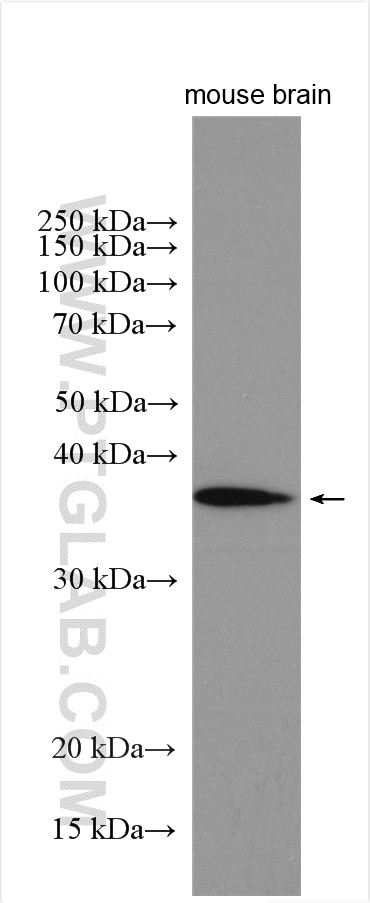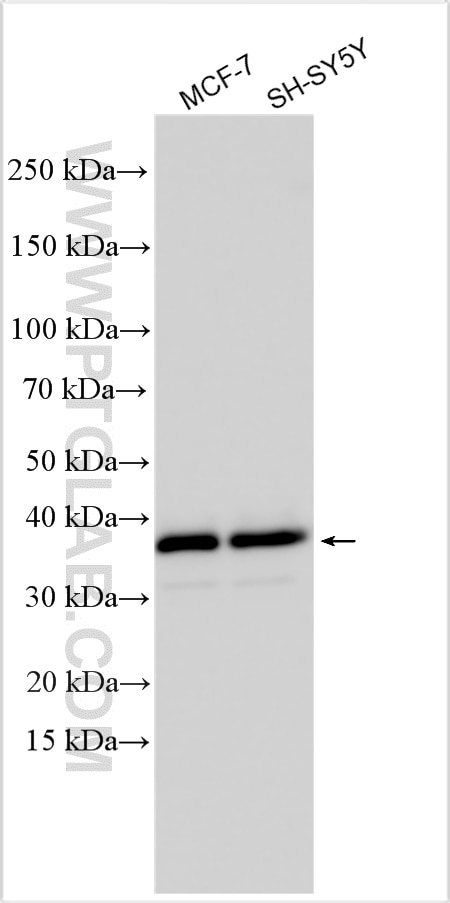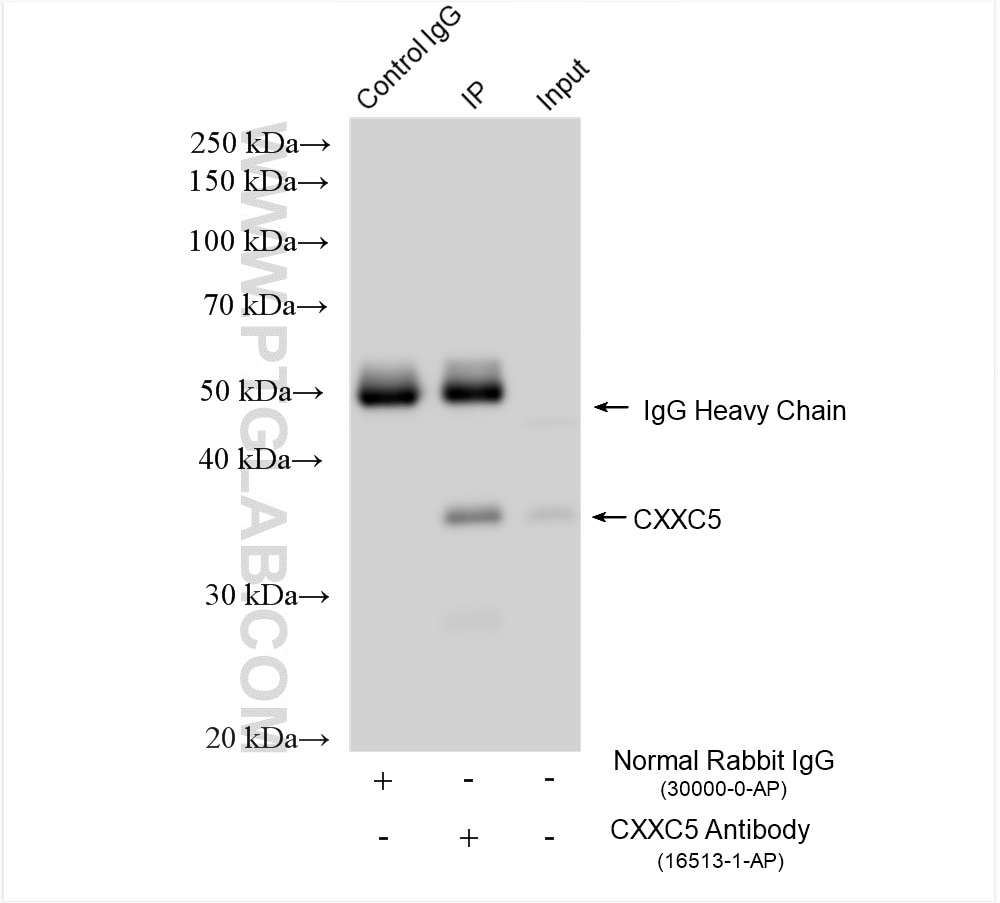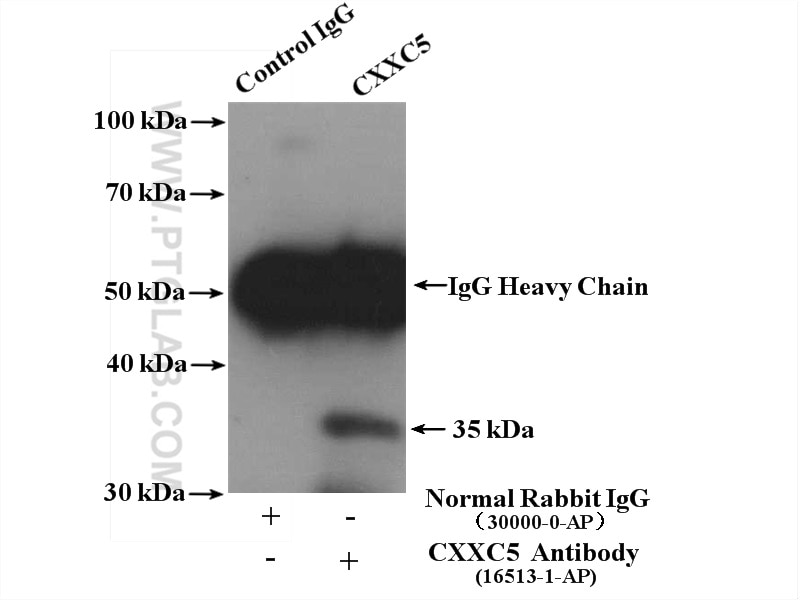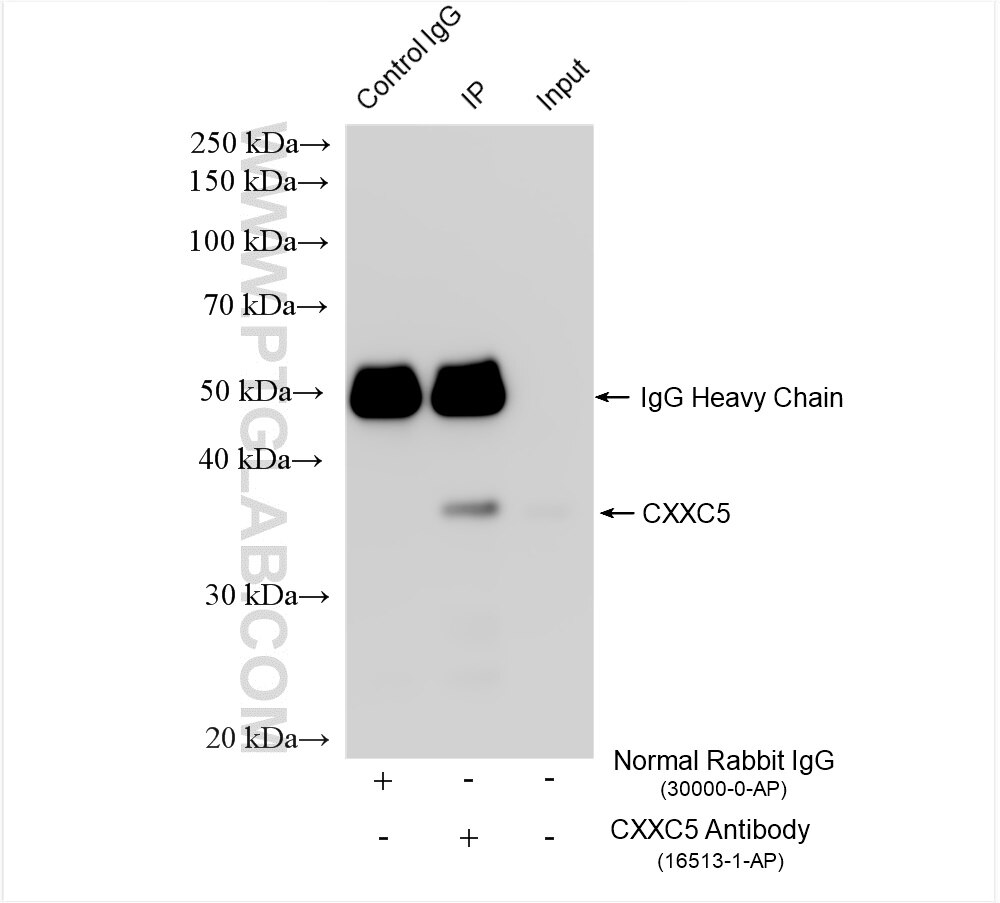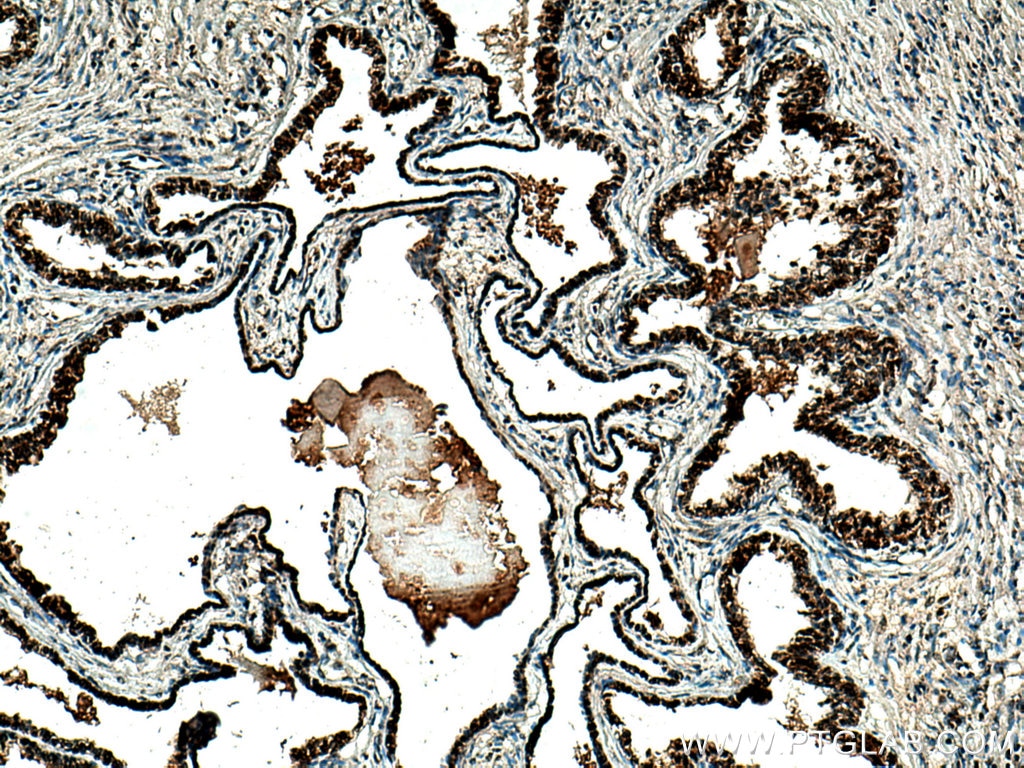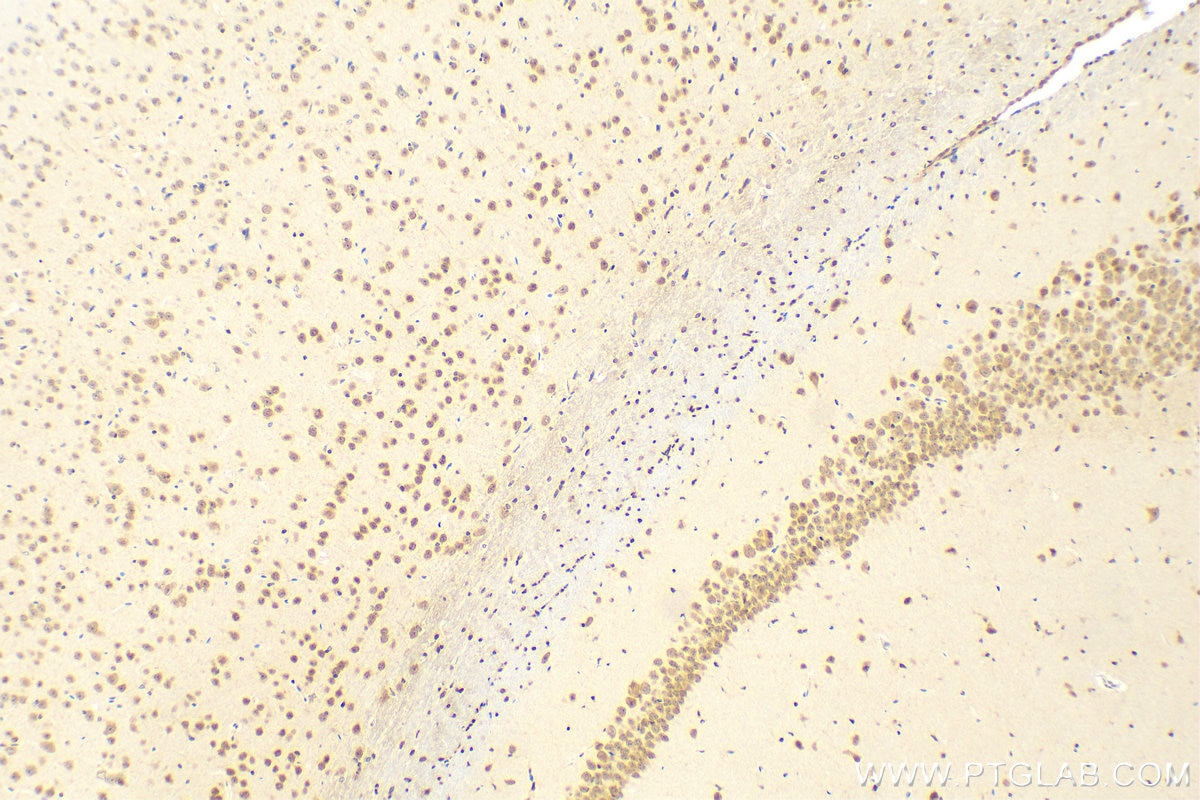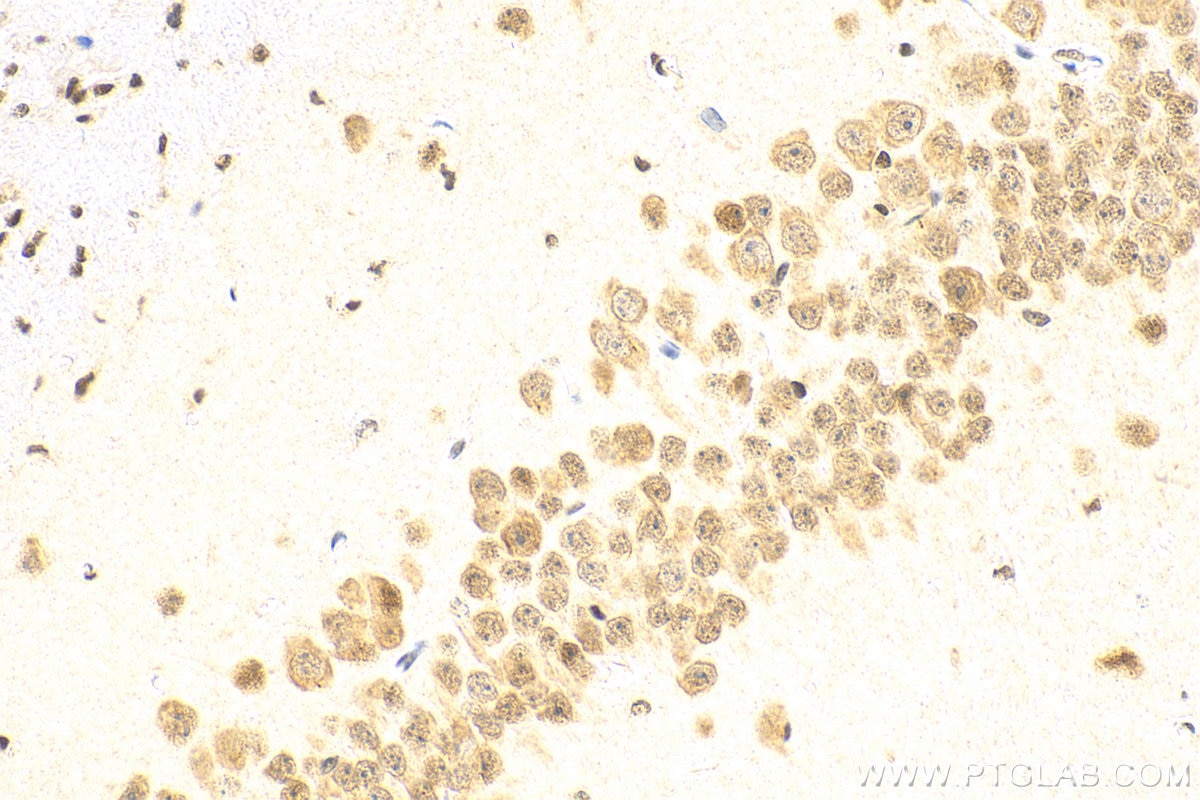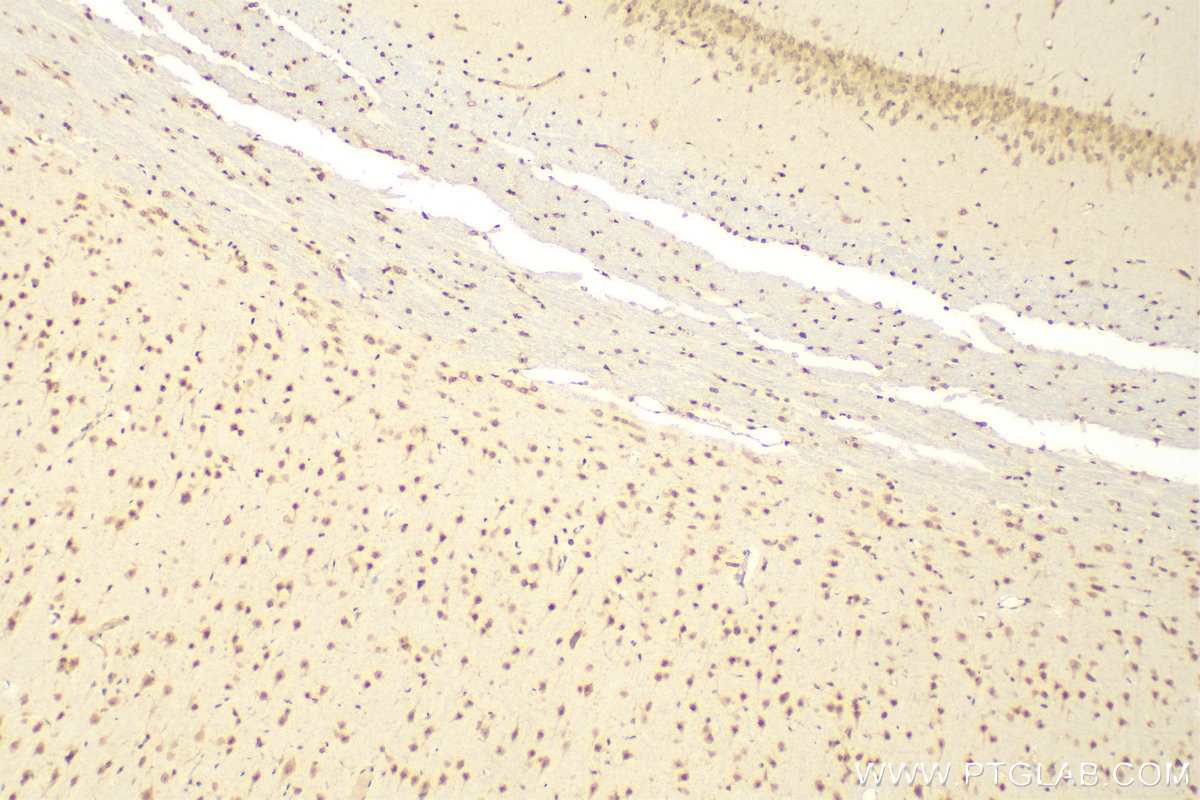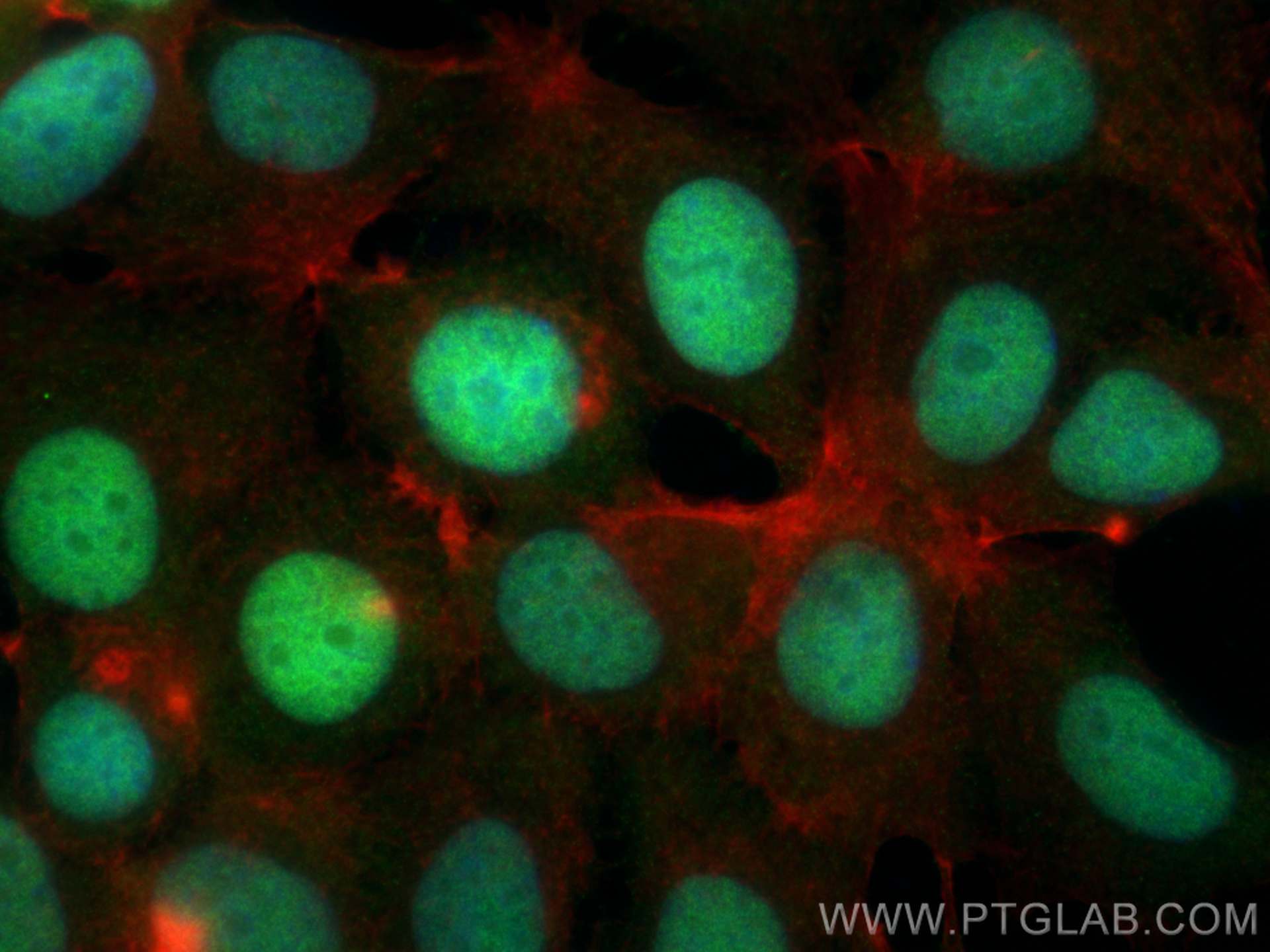- Phare
- Validé par KD/KO
Anticorps Polyclonal de lapin anti-CXXC5
CXXC5 Polyclonal Antibody for WB, IHC, IF/ICC, IP, ELISA
Hôte / Isotype
Lapin / IgG
Réactivité testée
Humain, rat, souris et plus (1)
Applications
WB, IHC, IF/ICC, IP, ChIP, ELISA
Conjugaison
Non conjugué
N° de cat : 16513-1-AP
Synonymes
Galerie de données de validation
Applications testées
| Résultats positifs en WB | cellules MCF-7, cellules SH-SY5Y, tissu cérébral de souris |
| Résultats positifs en IP | cellules SH-SY5Y, tissu cérébral de souris |
| Résultats positifs en IHC | tissu cérébral de souris, tissu cérébral de rat, tissu de cancer de la prostate humain il est suggéré de démasquer l'antigène avec un tampon de TE buffer pH 9.0; (*) À défaut, 'le démasquage de l'antigène peut être 'effectué avec un tampon citrate pH 6,0. |
| Résultats positifs en IF/ICC | cellules MCF-7, |
Dilution recommandée
| Application | Dilution |
|---|---|
| Western Blot (WB) | WB : 1:5000-1:50000 |
| Immunoprécipitation (IP) | IP : 0.5-4.0 ug for 1.0-3.0 mg of total protein lysate |
| Immunohistochimie (IHC) | IHC : 1:200-1:800 |
| Immunofluorescence (IF)/ICC | IF/ICC : 1:50-1:500 |
| It is recommended that this reagent should be titrated in each testing system to obtain optimal results. | |
| Sample-dependent, check data in validation data gallery | |
Applications publiées
| KD/KO | See 3 publications below |
| WB | See 9 publications below |
| IHC | See 1 publications below |
| ChIP | See 4 publications below |
Informations sur le produit
16513-1-AP cible CXXC5 dans les applications de WB, IHC, IF/ICC, IP, ChIP, ELISA et montre une réactivité avec des échantillons Humain, rat, souris
| Réactivité | Humain, rat, souris |
| Réactivité citée | Humain, poisson-zèbre, souris |
| Hôte / Isotype | Lapin / IgG |
| Clonalité | Polyclonal |
| Type | Anticorps |
| Immunogène | CXXC5 Protéine recombinante Ag9733 |
| Nom complet | CXXC finger 5 |
| Masse moléculaire calculée | 322aa,33 kDa; 227aa,24 kDa |
| Poids moléculaire observé | 35-40 kDa |
| Numéro d’acquisition GenBank | BC017439 |
| Symbole du gène | CXXC5 |
| Identification du gène (NCBI) | 51523 |
| Conjugaison | Non conjugué |
| Forme | Liquide |
| Méthode de purification | Purification par affinité contre l'antigène |
| Tampon de stockage | PBS with 0.02% sodium azide and 50% glycerol |
| Conditions de stockage | Stocker à -20°C. Stable pendant un an après l'expédition. L'aliquotage n'est pas nécessaire pour le stockage à -20oC Les 20ul contiennent 0,1% de BSA. |
Informations générales
CXXC5 (CXXC-type zinc finger protein 5) is also named as HSPC195, RINF and TCCCIA00297.CXXC5 is a member of the CXXC-type zinc-finger protein family. CXXC5 is a short protein (322 amino acids in length) that does not have any catalytic domain, but is able to bind to DNA and act as a transcription factor and epigenetic factor through protein-protein interactions. In addition, CXXC5 is capable of regulating various signal transduction processes, including the TGF-β, Wnt and ATM-p53 pathways, thereby acting as a novel and crucial signaling coordinator. CXXC5 plays an important role in embryonic development and adult tissue homeostasis by regulating cell proliferation, differentiation and apoptosis (PMID: 30479059). CXXC5 has two isoforms of 33 kDa and 24 kDa (PMID: 25805812). CXXC5 is modified by phosphorylation after translation.
Protocole
| Product Specific Protocols | |
|---|---|
| WB protocol for CXXC5 antibody 16513-1-AP | Download protocol |
| IHC protocol for CXXC5 antibody 16513-1-AP | Download protocol |
| IF protocol for CXXC5 antibody 16513-1-AP | Download protocol |
| IP protocol for CXXC5 antibody 16513-1-AP | Download protocol |
| Standard Protocols | |
|---|---|
| Click here to view our Standard Protocols |
Publications
| Species | Application | Title |
|---|---|---|
Nat Commun A noncanonical AR addiction drives enzalutamide resistance in prostate cancer.
| ||
J Exp Med Epigenetic regulator CXXC5 recruits DNA demethylase Tet2 to regulate TLR7/9-elicited IFN response in pDCs.
| ||
Oncogene NUDT21 negatively regulates PSMB2 and CXXC5 by alternative polyadenylation and contributes to hepatocellular carcinoma suppression.
| ||
Haematologica The epigenetic regulator RINF (CXXC5) maintains SMAD7 expression in human immature erythroid cells and sustains red blood cells expansion. | ||
Sci Rep KANK1 inhibits cell growth by inducing apoptosis though regulating CXXC5 in human malignant peripheral nerve sheath tumors. | ||
Front Cell Dev Biol Down-Regulation of CXXC5 De-Represses MYCL1 to Promote Hepatic Stellate Cell Activation. |
